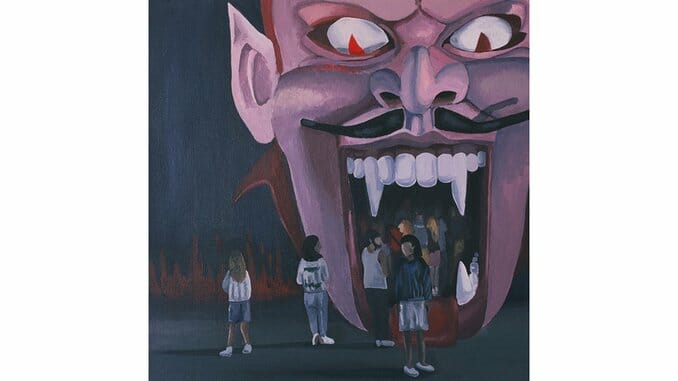Spirit of the Beehive Get Even More Abstract on ENTERTAINMENT, DEATH
After deconstructing their own song structures for three albums, the Philadelphia outfit lets go of sounding like a band

We all know how special it feels to fall in love with an album on the very first listen. There’s also something equally special about music that hits the brain from such an unfamiliar angle that it takes a while to even recognize whether you like it or not. There will undoubtedly be listeners whose experience with Spirit of the Beehive’s fourth album ENTERTAINMENT, DEATH falls into the first category, but those people will miss out on the satisfaction of gradually wrapping their head around the band’s Saddle Creek debut.
Since releasing their self-titled first album in 2014, Spirit of the Beehive have used disorientation as one of their primary musical devices. But even fans already accustomed to the Philadelphia outfit’s arsenal of curve balls should expect to find themselves confused this time out. It’s not that Spirit of the Beehive’s music is all that difficult to describe—or incoherent, or even especially inaccessible. Over a series of shifting lineups, the band has (more or less) married rustic folk-rock to an indie-rock ethos splashed with copious amounts of electronic window dressing. (That’s the simple explanation, anyway.)
On “monumental shame,” for example—a track from the band’s last album, 2018’s Hypnic Jerks—Spirit of the Beehive channeled Grateful Dead/Crosby, Stills & Nash vibes through a post-millennial filter. Seems straightforward enough, right? Haven’t countless artists achieved this same exact fusion of styles? Well, no—not like this. There’s something almost alien about the way Spirit of the Beehive inhabit various genre guises, as if the band is completely detached from any awareness of the cultural and temporal context for those genres.
Remember the inscrutable facial expression of the extraterrestrial character played by Jeff Bridges’ character in John Carpenter’s 1984 film Starman? Musically speaking, that’s how Spirit of the Beehive carry themselves when they explore various sounds we’ve been conditioned to associate with a million other things. It’s this utter lack of allegiance to skin-deep aesthetics that makes Spirit of the Beehive’s music so beguiling.
Far too many bands mistake style for substance, consciously attempting to re-create the aura of past musical movements, as if music were a time machine. In 2021, it’s all too easy to make music that instantly transports listeners to the past the way aging film reels and VHS tape do. And it takes zero imagination for musicians to go garage-sale’ing through old boxes for sonic artifacts. Spirit of the Beehive go a step further, crafting sounds that function less as a series of songs and more like dreams.
Dreams, though they play on our memories, mostly feel strangely unmoored from time. They also unfold in non-linear fashion, with a fluidity that’s impossible to experience in waking life. ENTERTAINMENT, DEATH, however, comes pretty close. Overall, the album sounds very much like the same group that has always deconstructed the idea of song structure, its older songs strewn with abrupt changes in barometric pressure via creative knob-twiddling on the mixing console, along with nonsensical samples flowing through them like a current of psychic space junk.
-

-

-

-

-

-

-

-

-

-

-

-

-

-

-

-

-

-

-

-

-

-

-

-

-

-

-

-

-

-

-

-

-

-

-

-

-

-

-

-








































